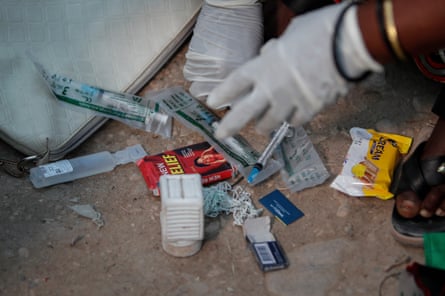New data shows that there has been a 15% increase in the number of females who have undergone female genital mutilation (FGM) in the last eight years.
Unicef revealed new data indicating that over 230 million girls and females are currently living with the effects of female genital mutilation (FGM), an increase from 200 million in 2016. Unicef’s executive director, Catherine Russell, noted that the trend is moving towards the practice being performed on girls at a younger age.
The speaker stated that female genital mutilation has negative effects on girls’ physical well-being, limits their future opportunities, and puts their lives at risk. The concerning trend is the increasing number of girls who are subjected to this practice at a young age, even before they turn five. This makes it even more urgent to intervene and work towards eradicating this harmful practice.
Unicef stated that in order to achieve the UN’s goal of eradicating the practice by 2030, efforts must be made 27 times faster than current rates. While FGM is not increasing worldwide, countries where it is prevalent are seeing higher rates of girls being born compared to the global average.
Female genital mutilation (FGM) refers to the removal of some or all of the external female genitalia and is considered a violation of individuals’ human rights. In 2012, the United Nations adopted a resolution to prohibit FGM.
Around 60 percent of FGM incidences, which equates to 144 million cases, take place in Africa, with Asia reporting approximately 80 million cases and the Middle East recording 6 million cases.
Somalia, Guinea, Djibouti, Egypt, Sudan, and Mali have the highest prevalence rates for issues related to girls. These countries are also facing additional urgent problems such as conflict, climate shocks, and food insecurity, which complicate efforts to implement programs to assist girls, according to Unicef.
Several African nations have seen a gradual decrease in the custom in recent decades, but overall advancements have halted or gone backwards.
In the Gambia, a proposed legislation was presented in parliament this week to revoke the ban on FGM. This has sparked a heated discussion on the topics of rights, religion, and culture within the country. In Sierra Leone, although there is increasing pressure for it to be outlawed, FGM is still considered legal. Tragically, this year, three girls lost their lives during FGM ceremonies in this West African nation.
Claudia Cappa, the Unicef report’s lead author, said: “Where the practice is concentrated, the majority of women and men are saying that they want the practice to stop … but this growing opposition is not matched with a change in [behaviour].”

Display the image in full screen mode.
After making the practice illegal in 2011, Kenya has seen a consistent decrease in FGM. However, activists are still worried about the level of progress being made.
In the northeastern region of Kenya, the Somali community is facing the challenges of the climate crisis. However, the enforcement of anti-FGM measures is not effective, and advancements have come to a standstill. There have also been reports of a resurgence of the practice in Murang’a, a region in central Kenya, where women over 30 are choosing to undergo FGM in an effort to reconnect with their cultural traditions.
Advocates argue that the increasing medicalization of the procedure, meaning it is performed by healthcare professionals instead of traditional cutters in hospitals or homes, hinders detection efforts.
According to Esnahs Nyaramba, a campaigner against FGM in the Kisii region of Kenya, she receives fewer requests for assistance compared to ten years ago. The frequency of reports from community members about ongoing cuttings, which previously aided in engaging local authorities to take action, has decreased due to the abandonment of public ceremonies associated with FGM, despite it still being practiced.
Nyaramba stated that in Kisii, it is challenging to accurately determine the occurrence of a particular trend. This is due to the fact that nowadays, only the mother and the person performing the circumcision are typically aware when a child undergoes the procedure.
On Friday, Unicef released its statistics on FGM and noted that there is a growing trend of families choosing to have their daughters undergo the practice at a younger age, often as young as two years old, in an effort to minimize the physical and psychological effects experienced by older girls. The agency emphasized the importance of addressing this trend.
Cappa stated that the time to prevent it has decreased and therefore, action needs to be taken at a higher level than previously.
According to Nimco Ali, the CEO of the Five Foundation, a worldwide alliance aimed at eradicating FGM, increased financial support is necessary for grassroots organizations dedicated to ending this harmful practice.
Ali, a survivor herself, is well aware of the damaging effects that FGM has on women and girls. In light of the new estimate revealing a staggering increase of 30 million more affected individuals, Ali expresses both shock and personal devastation. She believes that if we had followed effective prevention methods, this could have been avoided.
Source: theguardian.com


















